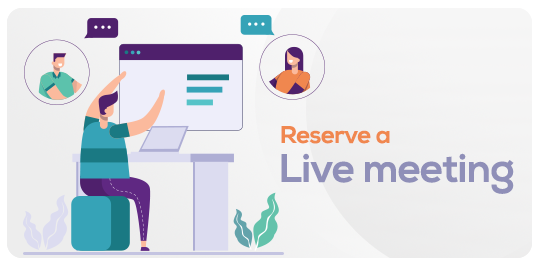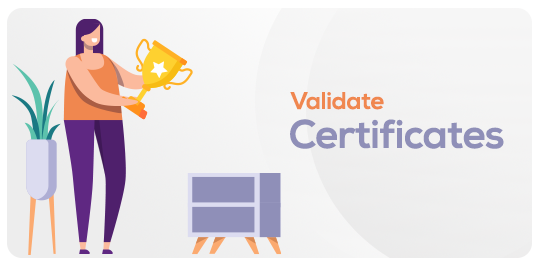Internship - Sprint - Web Development
in Internship ProgramWhat you will learn?
Module 1: HTML Fundamentals.
Module 2: CSS Essentials.
Module 3: JavaScript.
Module 4: The Vault - DBMS & SQL.
Module 5: The Engine - Python & Final Project.
About this course
What You Will Learn?
Ready to bring your digital ideas to life and build dynamic web experiences? A Web Development training class is designed for individuals eager to master the foundational languages of the internet. You'll gain practical knowledge in key front-end development principles, learning how to structure compelling content with HTML, style visually stunning interfaces with CSS, and add powerful interactivity with JavaScript. Through hands-on coding and project-based scenarios, you'll also explore the back end, learning how to manage, store, and retrieve data using DBMS (Database Management Systems). You'll master a versatile language like Python to handle server-side logic, interact with databases, and build the foundation of robust web applications. You'll explore essential topics like responsive design, DOM manipulation, form validation, and web best practices, preparing you to craft engaging user interfaces and launch your career in the vital field of web development.
Duration: 60 hours.
Benefits of Participation:
- Career Boost: Leverage 20+ professional Resume Templates to land your dream job.
- Real-world Experience: Build your portfolio with two Capstone Projects worth INR 6000.
- Certificate of Completion: Showcase your new skills with an official internship certificate.
- Every student will be provided with a Professional project report
Comments (0)
1. What is the internet.
2. How does the web work.
3. The role of HTML and CSS.
4. Setting up a development environment (code editor, browser)
5. HTML Basics.
6. Structure of an HTML document.
1. Text formatting. (headings, paragraphs, emphasis)
2.Lists. (ordered and unordered)
3.Links. (anchors)
4. Image.
1. Creating input fields. (text, number, email, etc.)
2. Buttons. (submit, reset)
3. Labels.
4. Form validation.
1. Introduction to CSS.
2. Selectors. (element, class, ID)
3. Properties and values.
4. Styling text. (font, color, size)
5. Styling elements. (background, border, margin, padding)
1. Block, inline, and inline-block elements.
2. Float and clear properties.
3. CSS Grid.
4. Advanced CSS Topics.
1. Positioning. (relative, absolute, fixed)
2. Units of measurement. (pixels, percentages, ems, rems)
3. Color theory and color models.
4. Media queries for responsive design.
1. Plan and design a basic website. (e.g., a personal portfolio or a score
board)
2. Implement the HTML structure.
3.Apply CSS styles for layout and appearance.
4. Test and debug the website.
1. What is JavaScript.
2. Why is it called JavaScript.
3. What can in-browser JavaScript do.
4. JavaScript and VS Code.
5. Code structure.
1. Variables: (let, var, const).
2. Data Types:
Number.
String.
Boolean.
Null.
Undefined.
Objects.
3. Type of Operator.
Mathematical Operators & their precedence.
Comparison Operators.
Logical Operators.
1. If statement.
2. If...else statement. (including ternary operator)
3. Else if ladder.
4. Switch case.
1. While loop.
2. Do...while loop.
3. For loop.
1. Functions:
Function Declaration.
Local variables.
Outer variables.
Parameters.
Default values.
Returning a value.
Naming a function.
2. Objects: the basics.
1. Objects: continued.
2. Strings: properties and methods.
1. Arrays: creation, access, manipulation.
2. Array functions: map, filter, reduce, etc.
1. Classes.
2. Constructors.
3. Getters and setters.
4. Inheritance.
1. Arrays: creation, access, manipulation.
2. Array functions: map, filter, reduce, etc.
1. Event listeners.
2. OnClick event.
3. Mouse events.
4. Keyboard events.
1. What is a database? What is a DBMS?
2. Understanding the Relational Model (RDBMS).
3. Core concepts: Tables, Rows, Columns, and Keys (Primary Key, Foreign Key)
1. Introduction to SQL (Structured Query Language).
2. Create: CREATE TABLE, INSERT INTO.
3. Read: SELECT ... FROM ... WHERE....
4. Update: UPDATE ... SET ... WHERE....
5. Delete: DELETE FROM ... WHERE....
6. Applying constraints (NOT NULL, UNIQUE, PRIMARY KEY).
1. Retrieving data from multiple tables using Joins (INNER JOIN, LEFT JOIN).
2. Introduction to Subqueries and Views.
3. Database Normalization: Understanding 1NF, 2NF, and 3NF to design efficient databases.
Project: Design and implement a database schema for a Library Management System (with tables for books, members, and loans). Write SQL queries to add new books, check out a book for a member, and list all overdue books.
1. Python syntax, variables, data structures (lists, dictionaries).
2. Control flow and functions.
1. Introduction to the Flask web framework.
2. Connecting a Flask application to your SQL database (e.g., SQLite).
3. Building a REST API: creating URL endpoints that you’re front-end can talk to.










